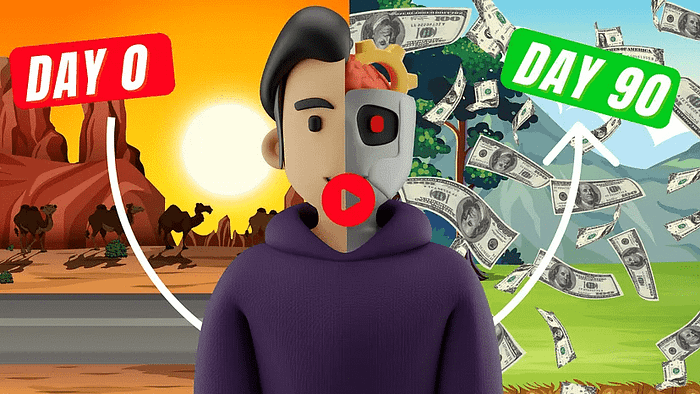8 Rules For Learning to Code in 2025…and should you?
Mastering the art of learning to code has become a critical crossroads for millions of aspiring developers worldwide, each seeking their path in the ever-expanding digital landscape of 2025. The question isn’t just about whether you should start coding – it’s about understanding if you have what it takes to succeed in an industry that’s simultaneously expanding and transforming.
The technological revolution has sparked countless debates about the future of programming, with artificial intelligence casting both shadows and light on the path ahead. Yet, the statistics tell a compelling story that many miss: while AI dominates headlines, only 6.1% of U.S. companies currently utilize AI in their operations. This revelation opens up a world of opportunities for those committed to learning to code and mastering the fundamentals of software development.
We strongly recommend that you check out our guide on how to take advantage of AI in today’s passive income economy.
Table of Contents
The Current State of Programming in 2025
Picture a vast digital frontier where developers make up merely 2.5% of the workforce, yet their impact resonates through every sector of the global economy. This landscape presents both challenges and unprecedented opportunities for those considering learning to code as their next career move. The tech industry continues to evolve, with AI consulting firms and startups flourishing, creating a unique ecosystem where traditional coding skills merge with cutting-edge technology.
The reality of the job market in 2025 remains promising, despite economic fluctuations. Companies across various sectors continue their search for skilled developers, with 94% of businesses still operating without AI integration. This statistic alone illuminates the vast potential for those dedicated to learning to code and building a strong foundation in software development.
The Truth About AI and Programming
The relationship between AI and programming has become increasingly symbiotic rather than adversarial. While AI tools can generate basic code and assist in development, they require human developers who understand programming fundamentals to guide, implement, and optimize their output. This synergy has created new opportunities for those learning to code, particularly in areas where human creativity and problem-solving skills remain irreplaceable.
Breaking Down the 8 Essential Rules
Rule #1: Cultivate Genuine Passion
The journey of learning to code demands more than just technical aptitude – it requires genuine passion. Unlike previous years, where high salaries alone could motivate career transitions, 2025’s landscape demands authentic enthusiasm for programming. This passion serves as a crucial foundation for long-term success and continuous learning in the field.
Career satisfaction in programming correlates strongly with an intrinsic love for coding. Without this fundamental connection to the craft, even the most lucrative positions can lead to burnout and dissatisfaction. The key lies in discovering whether solving complex problems through code genuinely excites you, rather than viewing it solely as a means to financial security.
Rule #2: Embrace the Learning Curve
The path to mastery in learning to code requires unwavering commitment to the fundamentals. Despite AI’s capabilities in generating HTML and CSS, understanding these building blocks remains crucial. The development journey demands mastery of core concepts, from JavaScript’s intricacies to DOM manipulation and asynchronous programming.
Success in programming requires setting clear, achievable milestones along your learning journey. Creating a structured learning path, complete with specific goals and timelines, proves essential for maintaining progress and measuring growth. This systematic approach to learning to code ensures comprehensive skill development and prepares you for real-world challenges.
Rule #3: Immerse Yourself in the Culture
True success in programming extends beyond technical skills to embrace the developer lifestyle fully. Professional developers consistently demonstrate their passion through active participation in the tech community, maintaining technical blogs, and staying current with industry developments. This immersion creates a natural environment for continuous learning and professional growth.
The developer community values those who demonstrate genuine enthusiasm and commitment through their daily actions. From maintaining an active GitHub presence to contributing to technical discussions, these activities showcase your dedication to learning to code and your potential value to future employers.
Rule #4: Develop a Precise Learning Strategy
Success in learning to code demands meticulous planning and organization. Creating a detailed roadmap of your learning journey, complete with specific milestones and deadlines, proves crucial for maintaining focus and measuring progress. This level of planning helps prevent the common pitfall of scattered learning and ensures steady advancement toward your goals.
Your learning strategy should include detailed timelines for mastering specific technologies and completing key projects. This structured approach helps maintain momentum and provides clear benchmarks for progress evaluation. Regular assessment and adjustment of your learning plan ensure you stay on track toward your programming goals.
Rule #5: Maintain Unwavering Focus
The journey of learning to code requires exceptional focus and dedication to your chosen path. Like a horse with blinders, maintaining concentration on your specific learning goals while filtering out distractions becomes essential for success. This focused approach helps prevent the common pitfall of constantly switching between different technologies or methodologies.
Achieving your programming goals demands resistance to the constant temptation of exploring every new technology or framework that appears. Staying committed to your chosen learning path, despite external pressures or trending alternatives, often determines your ultimate success in mastering programming skills.
Rule #6: Build a Professional Network
Networking plays a crucial role in establishing a successful programming career. Building professional relationships within the tech community provides invaluable support, mentorship opportunities, and potential job leads. These connections often prove essential when seeking employment opportunities or advancing your career.
Active participation in the tech community through social media, tech forums, and local meetups helps establish your presence in the field. Regular engagement with fellow developers and industry professionals creates opportunities for learning, collaboration, and career advancement. This network becomes particularly valuable when seeking job opportunities or technical guidance.
Rule #7: Confront Your Fears
The journey of learning to code inevitably involves facing and overcoming various challenges and fears. Technical interviews, code reviews, and project presentations all require stepping out of your comfort zone. Embracing these challenges as growth opportunities rather than obstacles proves essential for professional development.
Success in programming often requires pushing beyond self-imposed limitations and confronting imposter syndrome. The ability to persist through challenging situations and maintain confidence in your abilities becomes crucial for long-term success in the field. This resilience helps navigate the inevitable setbacks and challenges in your programming journey.
Rule #8: Maintain Independence from AI
While artificial intelligence offers powerful tools for development, maintaining independence during the learning process proves crucial. The foundation of learning to code must focus on understanding core concepts and developing problem-solving skills without over-reliance on AI assistance. This approach ensures robust knowledge and capability development.
Finding the right balance between utilizing AI tools and developing independent coding skills becomes essential. While AI can enhance productivity, strong fundamental knowledge and problem-solving abilities remain irreplaceable. This balanced approach prepares you for both current and future technological developments in the field.
Final Thoughts on Your Coding Journey
The decision to pursue learning to code in 2025 requires careful consideration of these eight essential rules. Success in programming demands more than just technical ability – it requires passion, dedication, strategic planning, and resilience. Understanding and embracing these principles helps navigate the challenges and opportunities in the current tech landscape.
The journey of learning to code, while challenging, offers remarkable opportunities for those willing to commit fully to the process. By following these guidelines and maintaining dedication to your goals, you can build a rewarding career in software development, regardless of the evolving technological landscape. The key lies in approaching this journey with both determination and strategic insight, understanding that success comes to those who prepare thoroughly and execute persistently.

We strongly recommend that you check out our guide on how to take advantage of AI in today’s passive income economy.




